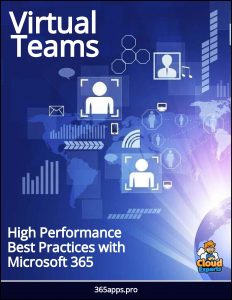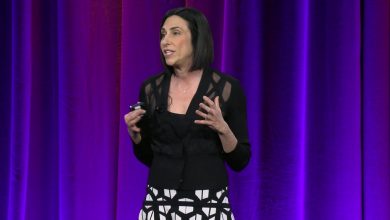 Accelerated by the pandemic remote, virtual working has become the norm for many organizations.
Accelerated by the pandemic remote, virtual working has become the norm for many organizations.
This presents many challenges including cultural and technological, but if addressed correctly can unlock high performance team capabilities: new, more efficient and collaborative ways of working.
High Performance Virtual Teams
In this article MIT explores these challenges, identifying best practices that not only support remote team working but in a way where they outperform traditional office-based ones.
The authors identify that yes by default, teams that work in close proximity perform better than those that are remotely distributed due to the face to face human factors that improve communication and collaboration -but- when specific apps and tools are applied to systematize high performance behaviours, Virtual Teams perform better.
This is because by their nature distributed teams are inherently more diverse, calling upon members from nationalities and cultures from across the world, which when united via these high performance practices combine to achieve a much more powerful collective than with less diverse groups that rely on accidental improvements arising from close proximity only.
Microsoft 365 offers these specific apps and tools, and is ideal for enabling these agile ways of working, as it provides the building blocks for global, remote team collaboration, and further integrated into this suite are apps that can define, implement and measure the high performance practices.
Agile Enterprise 365
Before diving into the details of the 365 app suite it’s essential to establish an Operating Model that will guide how they are used. As the MIT article highlights the critical dynamic that determines high performance teams are the tools and processes that enables them to work in specific ways that achieve this.
Teams don’t operate in isolation, their purpose is to fulfill a larger organizational objective, and equally they are made up of individuals whose sole actions determine the effectiveness of the team.
Therefore what’s needed is a holistic, closed loop system, one that reflects these three distinct dimensions, cascading down from the most senior executive level that sets strategy, through team management that translates this into measurable goals and then down to the specific individuals tasks and action that work towards achieving those goals.
Critically the closed loop is achieved by a bi-directional flow, where there is also an upward feedback on progress that informs management and executives such that they reshape their strategy in real-time accordingly, and then again, cascade down those adjusted targets.
There are best practice models that can be called upon to understand and apply the right structures at each level:
| Level | Best Practices | Purpose |
| Executive | ATO – Agile Transformation Office |
|
| Management | OKRs |
|
| Team | Team GTD |
|
Synthesizing these different best practice sets into one system and implementing them via 365 apps defines Agile Enterprise 365.
Agile Transformation Office (ATO)
This McKinsey article describes the ‘Agile Transformation Office’. An ATO shapes and manages the transformation, brings the full organization along, and—perhaps most important—helps it achieve lasting cultural change.
The ATO is not meant to be an oversight board or another layer of bureaucracy. Instead, it is embedded within the existing structure, pulling in the right business expertise to realize tangible outcomes.
OKRs
‘OKRs‘: Objectives and Key Results, is a goal-setting framework used by individuals, teams, and organizations to define measurable goals and track their outcomes. The development of OKR is generally attributed to Andrew Grove who introduced the approach to Intel in the 1970s.
In this guide we explain how 365 tools including Project, Planner, Teams and Viva Goals can be synthesized together and utilized to implement a system of OKRs to enable a framework for organization-wide high performance enterprise agility.
Team GTD
‘Getting Things Done’ (GTD) is a personal productivity system developed by David Allen and published in a book of the same name.
As the name defines David Allen’s personal productivity system ‘Getting Things Done’ is intended for an individual to use to boost their own work effectiveness. However it’s especially powerful when implemented across the enterprise, utilizing functions that smoothly synthesize tasks from the project and team to the individual, and back again.
In this guide we document how to implement the methodology across the Microsoft 365 apps, to greatly improve your own work productivity, and critically, how to link it to enterprise level systems so that work flows naturally from projects to people, aka ‘Getting Things Done Enterprise‘.



